Jump to Category: Assessment Practice | Professionalism and Executive Functioning
Assessment Practice
Designs major assessments that reflect course outcomes (post at start of each trimester)
My desired course outcomes at a high level—regardless of class or specific course unit—primarily relate in some fashion to some (if not all) of the following:
- Physical and psychological safety
- Improving cardiovascular health
- Mind-body coordination
- Flexibility
- Game-specific skills/techniques
- Developing strategy and executing tactics
- Play / fun / joy
In Customized Training to Maximize Performance (CTMP), the major assessment is the final project and presentation. This assignment captures the goal tracking process, illustrating the progress during the trimester. This assignment also includes reflection on the phases of the training plan design and overall class experience.
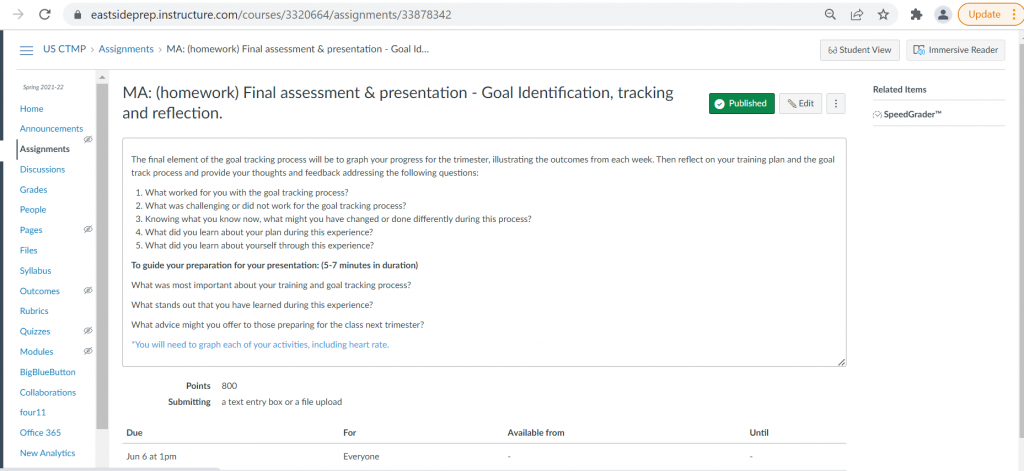
In group PE classes, only one assignment is outside of class sessions; the initial heart rate report and calculation. All other assignments and assessments are in-class.
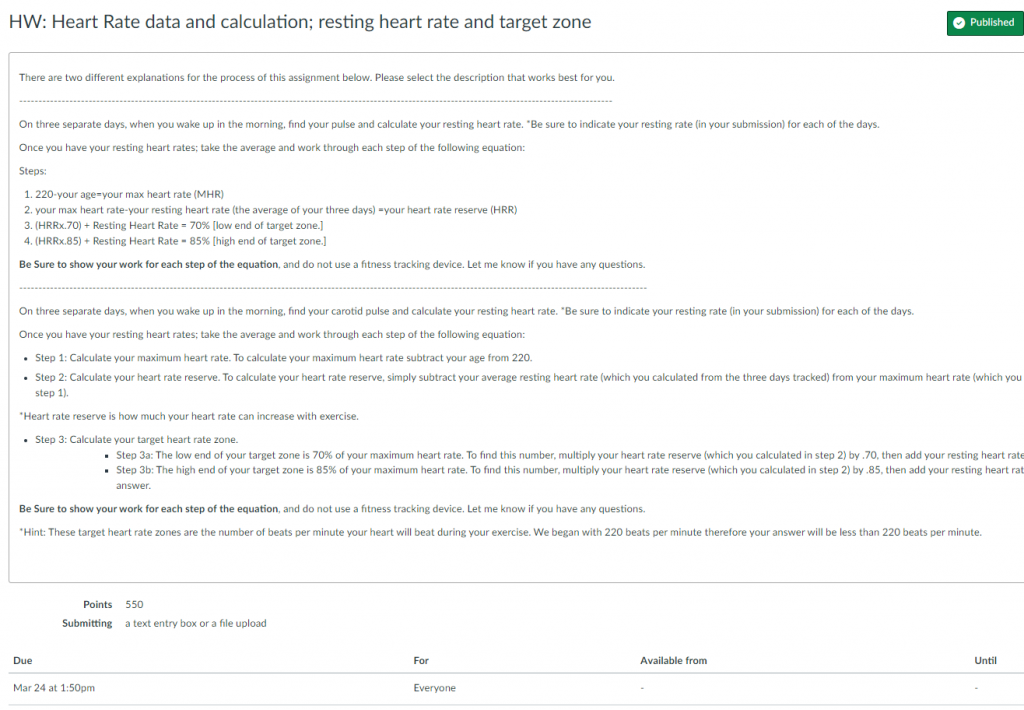
Designs assignments to be graded and returned in a feedback cycle of seven calendar days
After each block cycle I perform a review of the Canvas grade books for each of my courses to make sure I’ve provided students with the appropriate feedback on assignments.
Ensures the number of assignments in each course is neither excessive nor deficient, providing appropriate time for quality student performance and meaningful teacher feedback.
A fundamental aspect of my teaching philosophy is that it is always important for the assignments and activities in my class to have both a specific purpose and that I clearly convey that purpose to students. I strive to provide the “why” behind every activity and assignment I create.
In the Group PE classes, there are three types of assignments:
- Preparation: Because Group PE class is designed to be a performance-based class, it is rooted in student engagement and participation (rather than focused solely on results). Participation begins with preparation. Preparation assignments include:
- Being on time
- Having the necessary items (change of clothing, appropriate footwear, water bottle)
- Being ready to participate when class starts.
- Participation: Building upon the preparation assignments, participation assignments are broken down into categories that mirror our mission. Thinking, Acting, and Leading.
- Fitness Tracking (progress): through benchmarks. These events are completed between 3-5 times per trimester. the frequency of this depends on the number of breaks in that trimester. Students complete baseline benchmarks at the beginning of the trimester, the second iteration is just prior to a school break or the mid-term (whichever is earlier), if the second iteration is prior to a break, the third iteration follows the break, and the final iteration of benchmarks is the final week of the trimester.
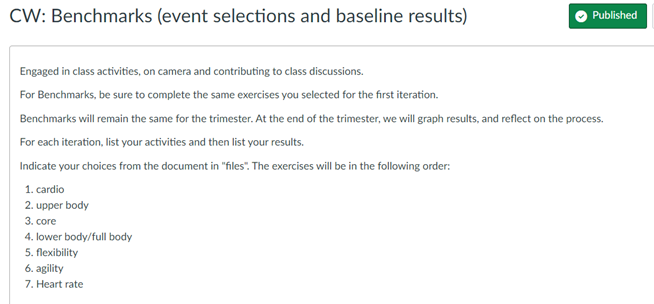
For CTMP classes, there are slightly different types of assignments
- MA; Final Project and Presentation: This is published at the start of the trimester. It is deigned to capture the student’s experience of the goal identification and the goal tracking process. And challenges them to reflect on aspects of the course that worked well, that didn’t work well, and what they learned about themselves in the process.
- Reflection Questions: (Upper School Only) Students respond to essential questions every other week that are intended to prompt them to think about different aspects of movement in their lives; lifelong fitness; and the benefits/drawbacks of an individualized approach to PE.
- Goal Identification and tracking: Students communicate their broad goal and specific activities which will be used to track progress toward the self-identified goal. The goal tracking activities must be specific and measurable, using time, distance or repetition.
- Heart rate assignment: The goal is to help students understand the importance of cardiovascular health; target heartrate zones; and alternative ways to measure health and fitness.
- Individual Training Plans (Designed by Students). The creation of the Individual training plans is two phases for Middle School students and three phases for Upper School students. The first phase is a time-based model to develop time-management and build understanding of the duration of certain activities and the sequencing of the workout.
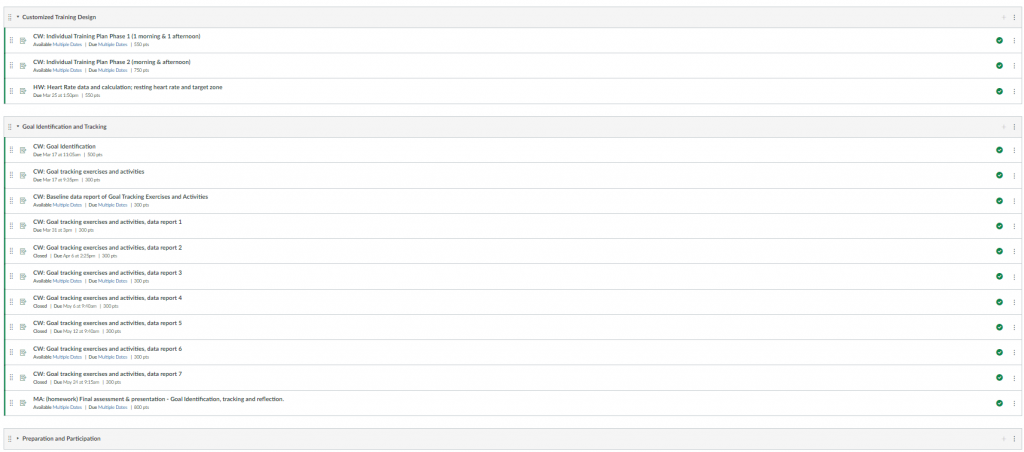
Outcomes: Example slides from final projects and student presentations.
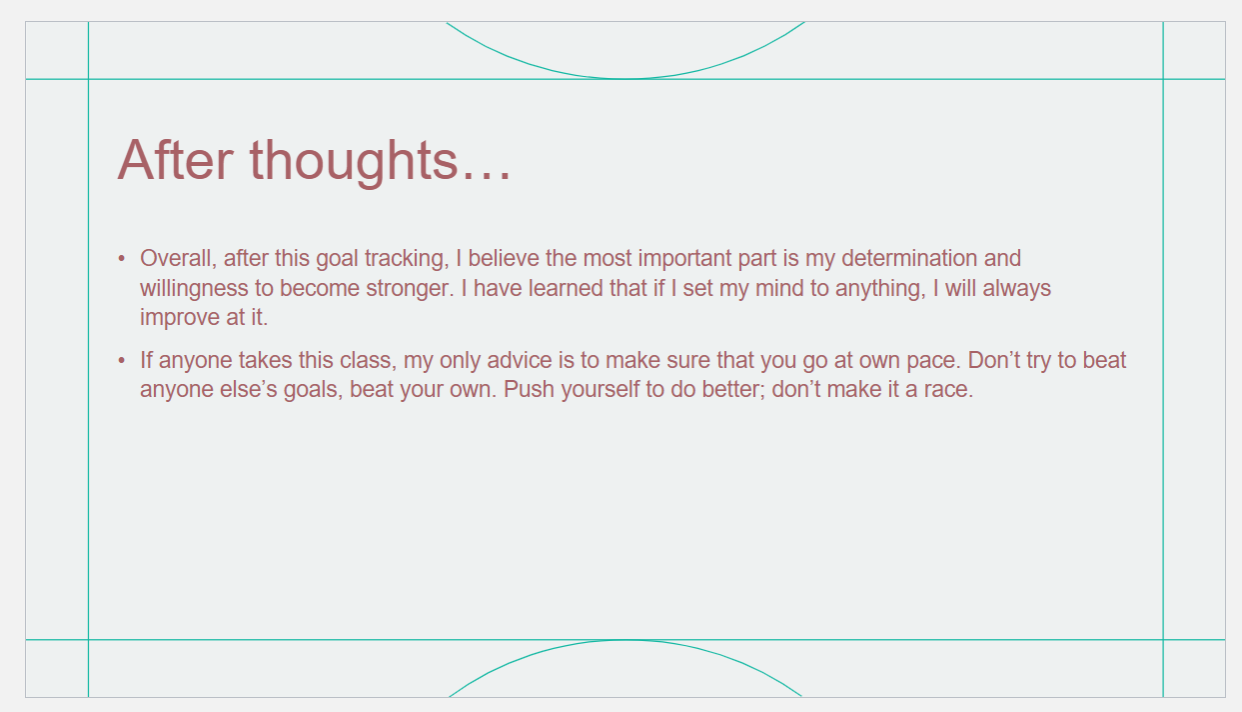
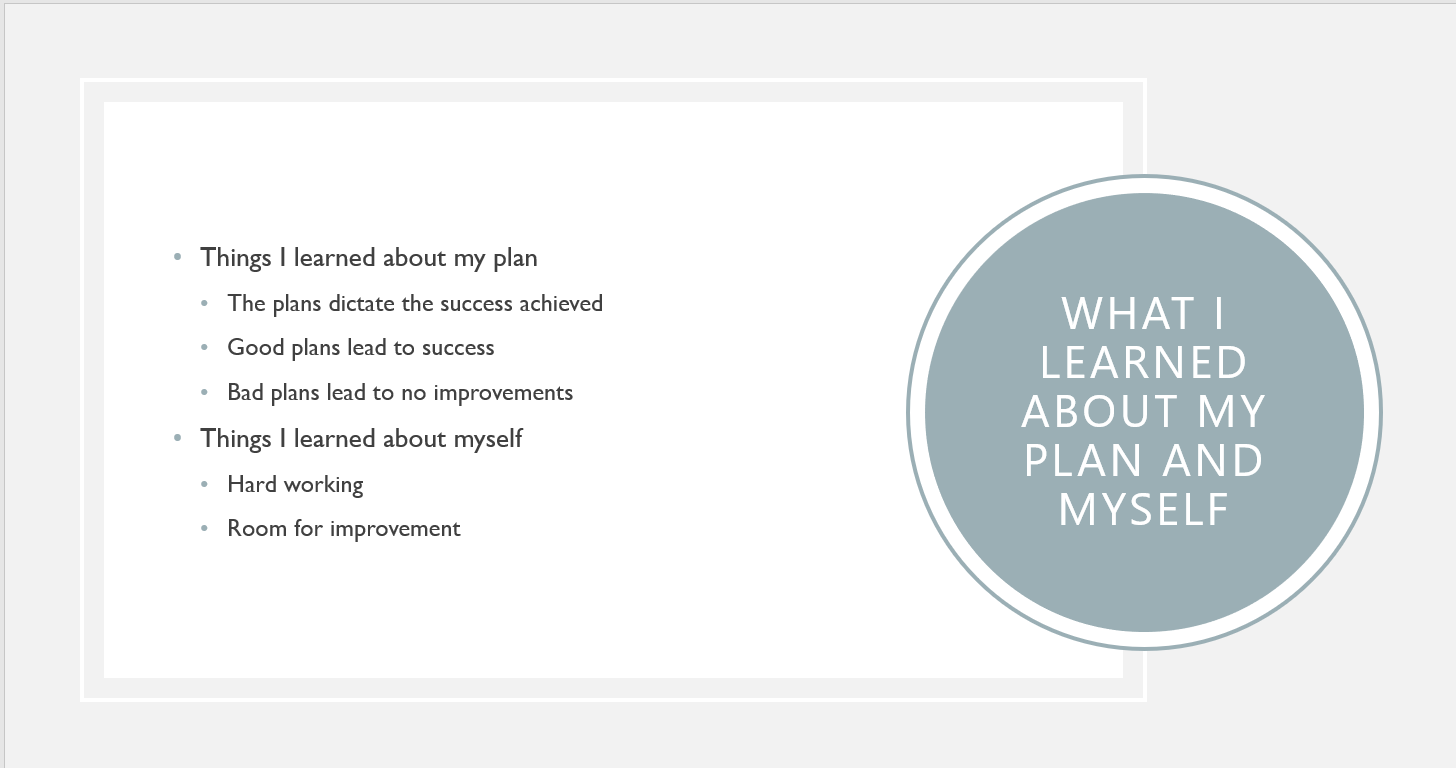
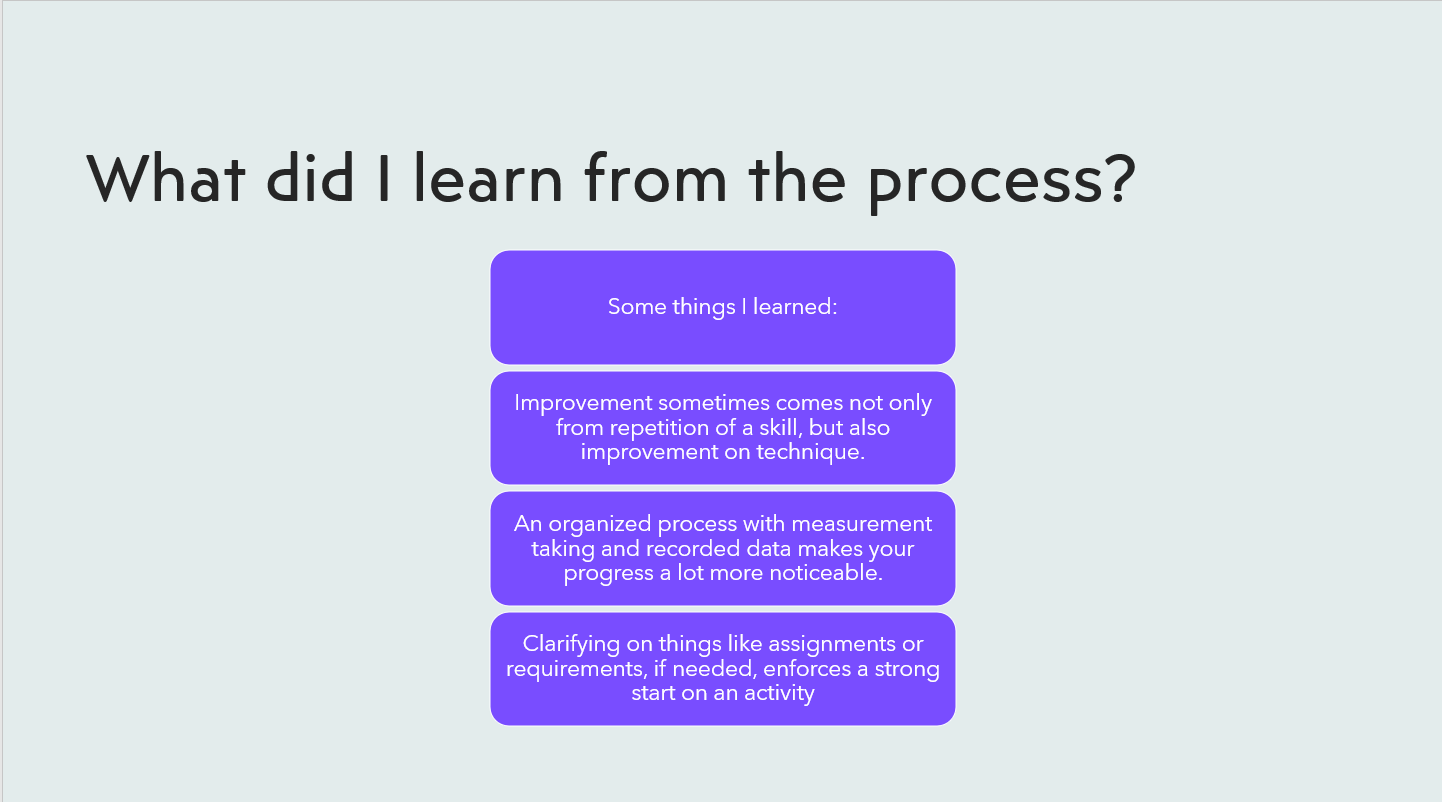
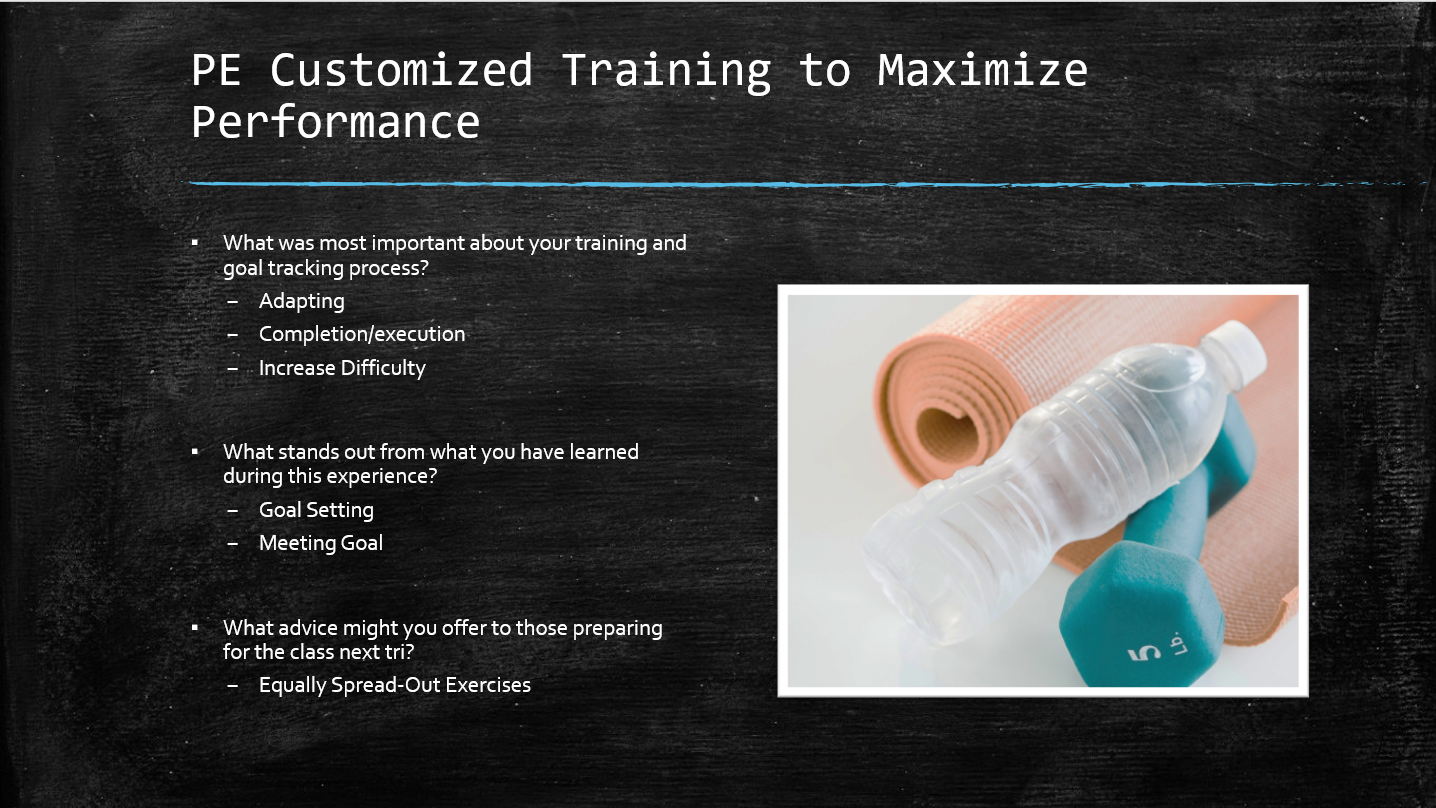
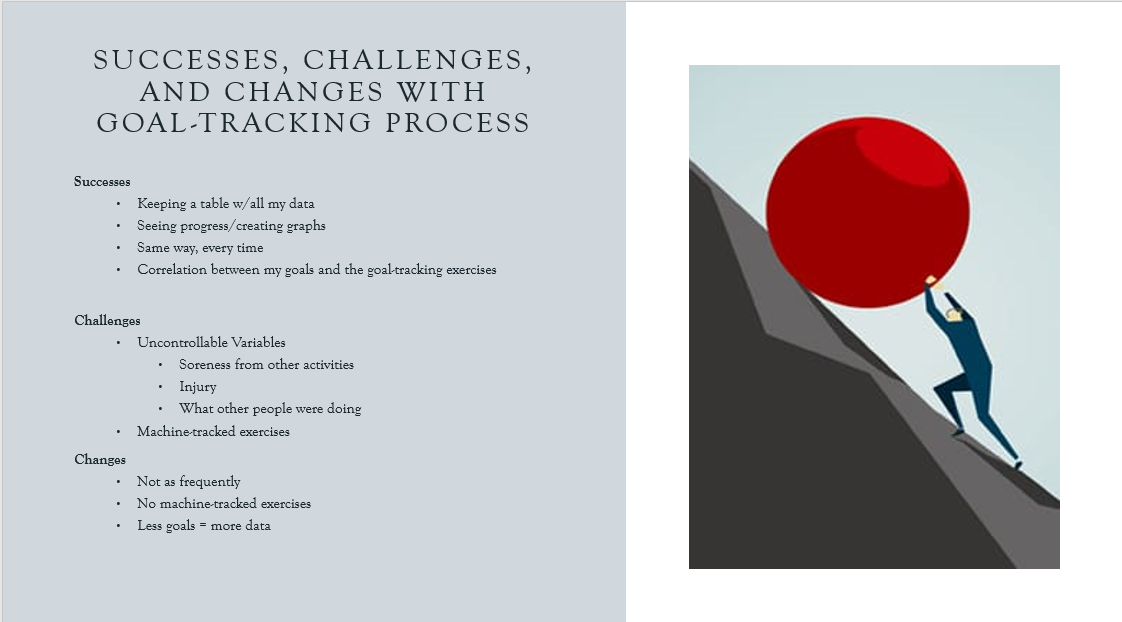
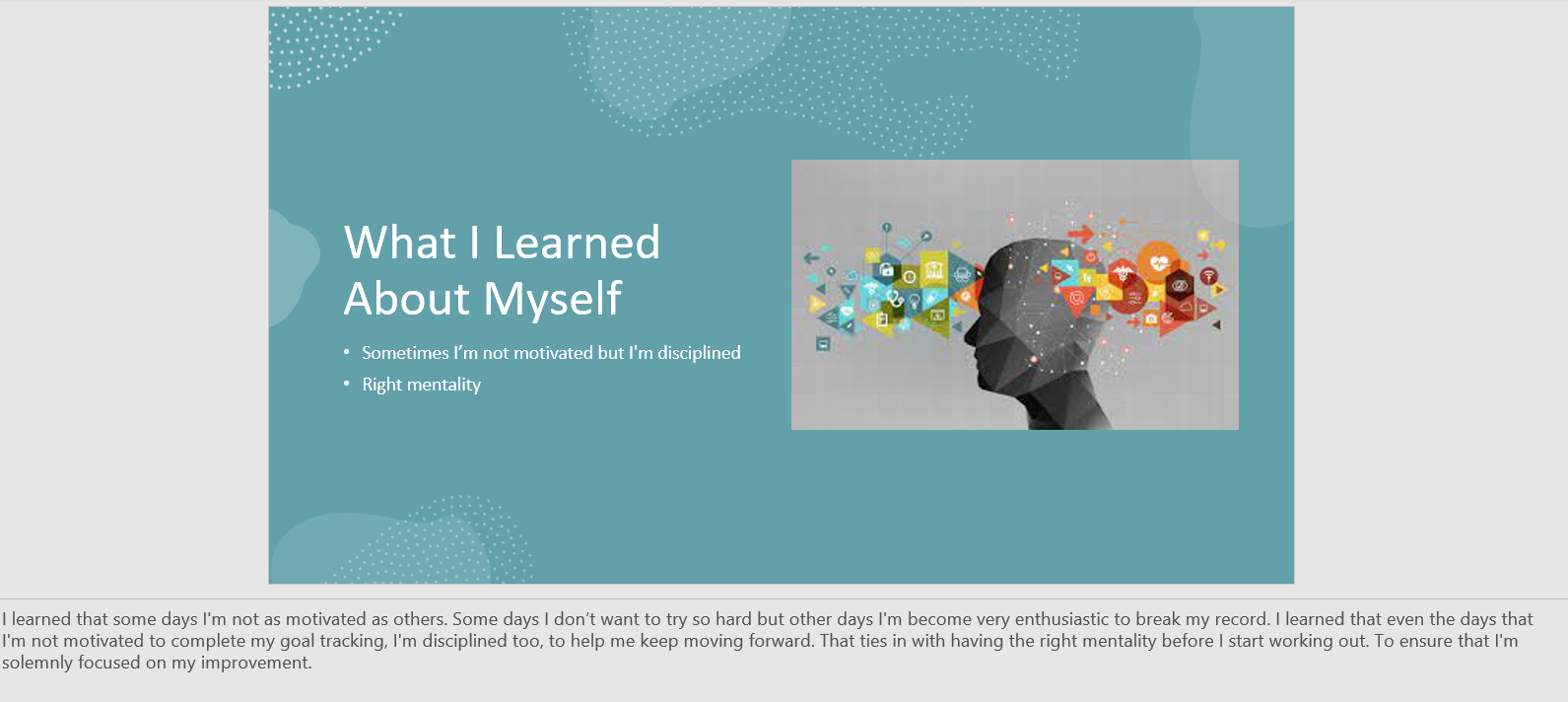
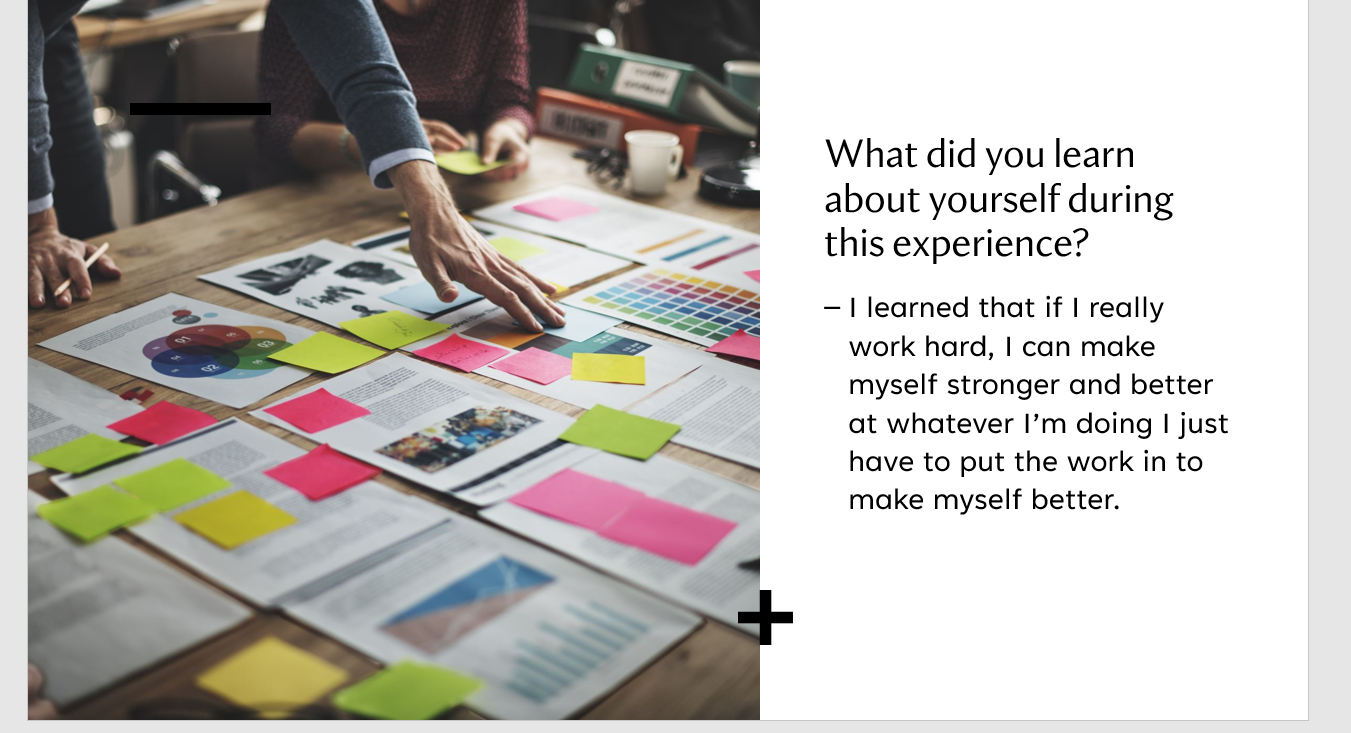
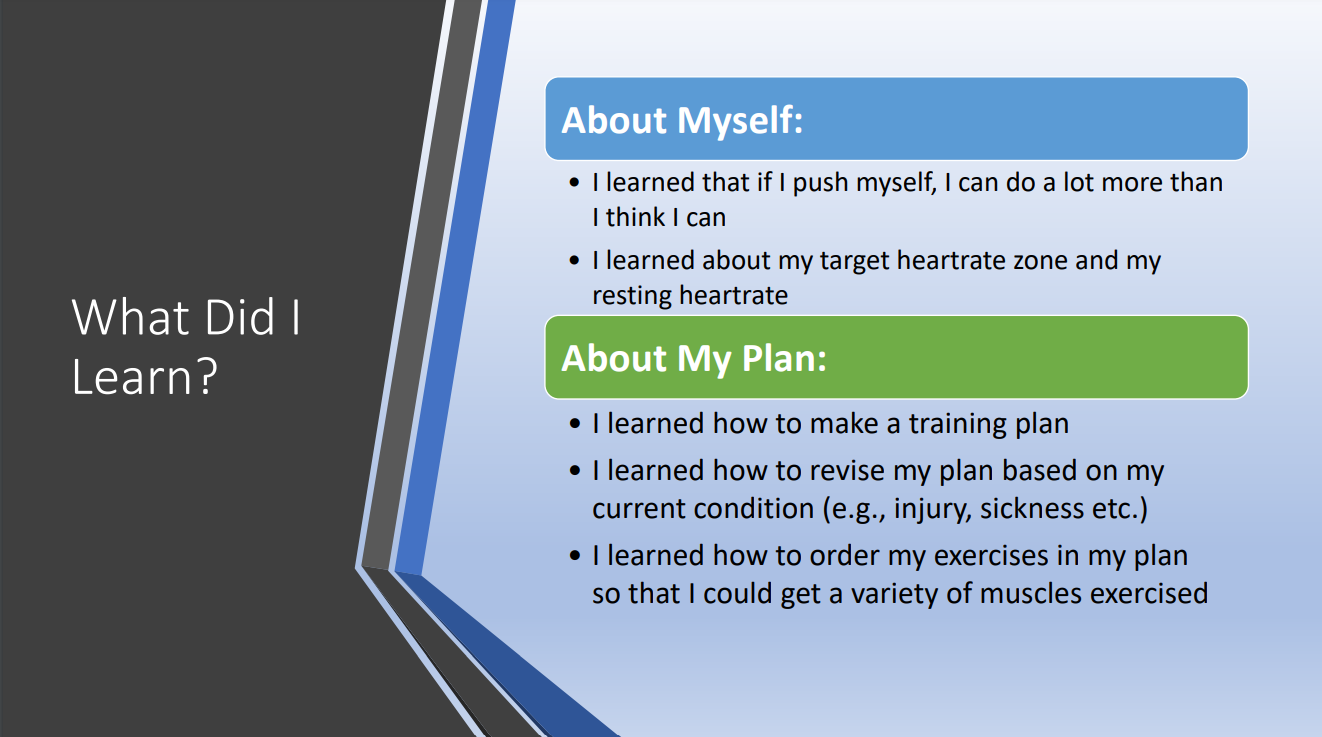
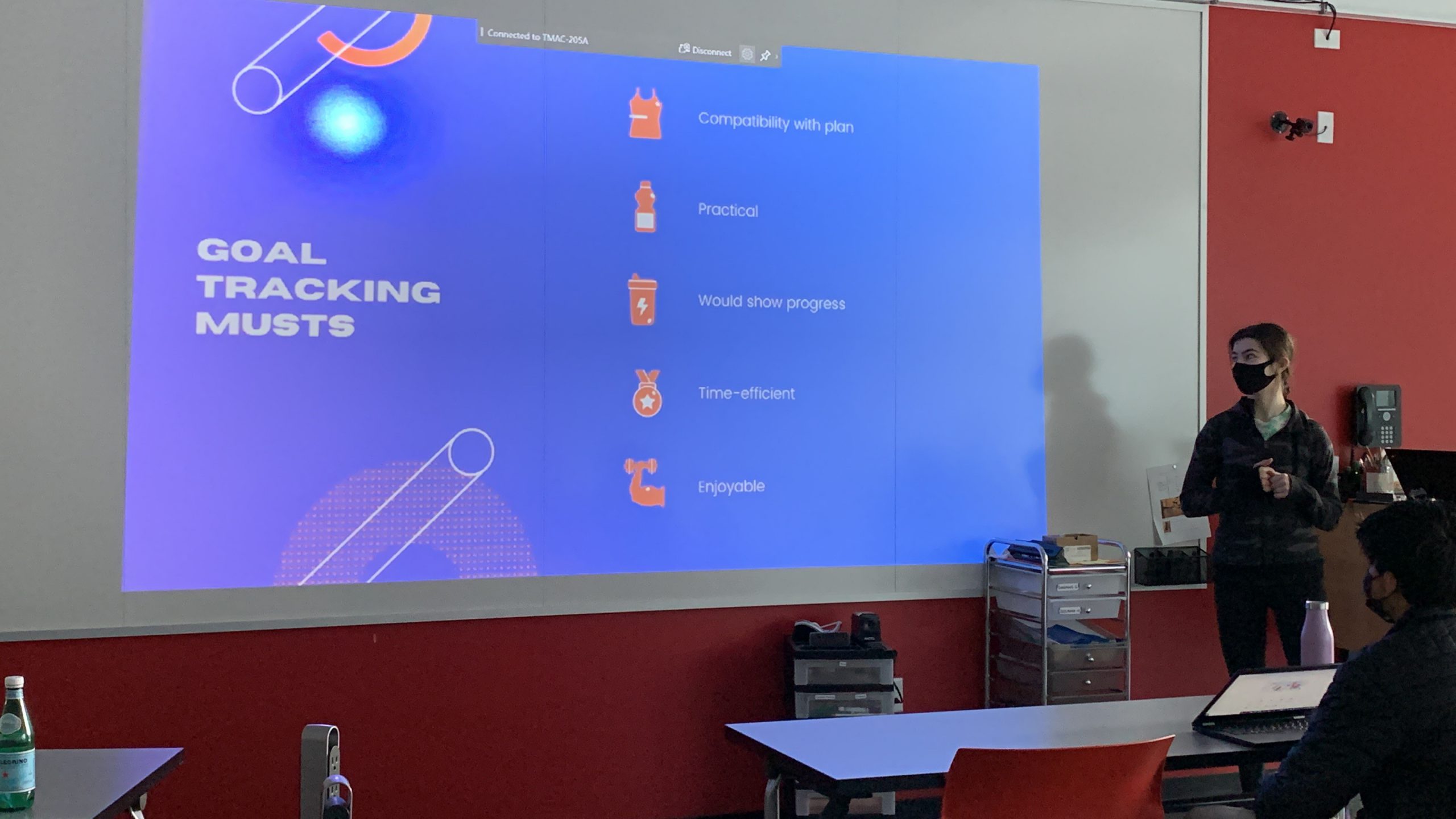
Professionalism and Executive Functioning
Approaches Recommendations for Improvement Receptively and Responsively
I love information and feedback is another format of receiving essential information. I seek feedback on a regular basis from students, colleagues and school leadership. I always want to be getting better. Any day that I’m not striving to improve is a missed opportunity. While it can be challenging at times to receive constructive feedback, I would rather know so I can to reflect and refine. This supports my ongoing improvement.
For student feedback in particular, I conduct mid-term check ins (instead of waiting for end of trimester formal feedback). This provides the opportunity to potentially make modifications with enough time to change the student experience during that trimester (instead of waiting to the end). This allows for more timely adjustments to benefit those in the class at that time, as well as future classes.

Example: A middle-school student expressed concern and frustration about the number of assignments in the customized class at the middle school level, sharing that it felt overwhelming. Sitting down with the student, we reviewed the assignments together and discussed potential areas we might pare things down to better meet the needs of students at that level. This feedback process helped create a better scope and sequence for the middle school class.
Displays Openness and Comfort with Visitors Observing Class
The most frequent visitors to my classes have been tour groups with the Admissions Department. I enjoy meeting students and parents visiting campus, and appreciate the opportunity to share details about what is happening in my classes, and to share information about EPS Physical Education courses.
“Melissa has been an amazing partner with Admissions. It is highlight of tours when Melissa is in the gym and always takes time to talk to the group. Her enthusiasm for EPS is contagious (in a good way).”
During the pandemic, we had formal visits which led to feedback, as well as ongoing “visits” of siblings and parents due to the remote nature of the experience. Below is feedback from Sam Uzwack (Middle School Head at that time) and Matt Delaney (Director of Academic Design and Integration).
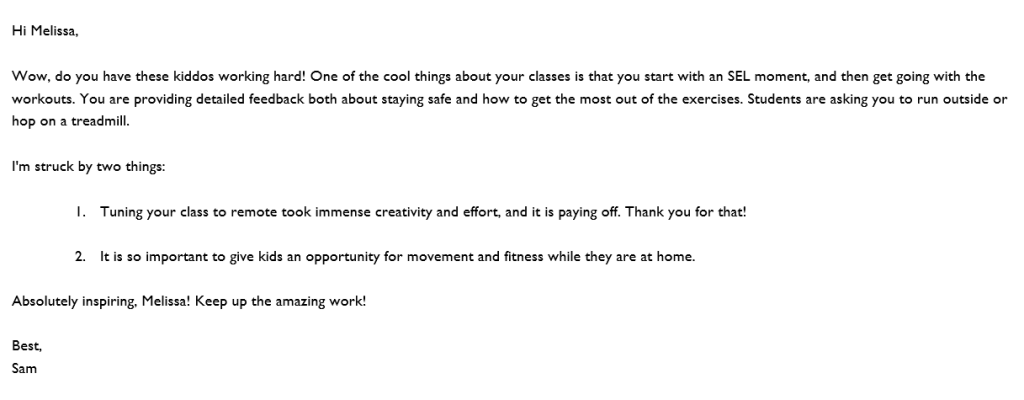
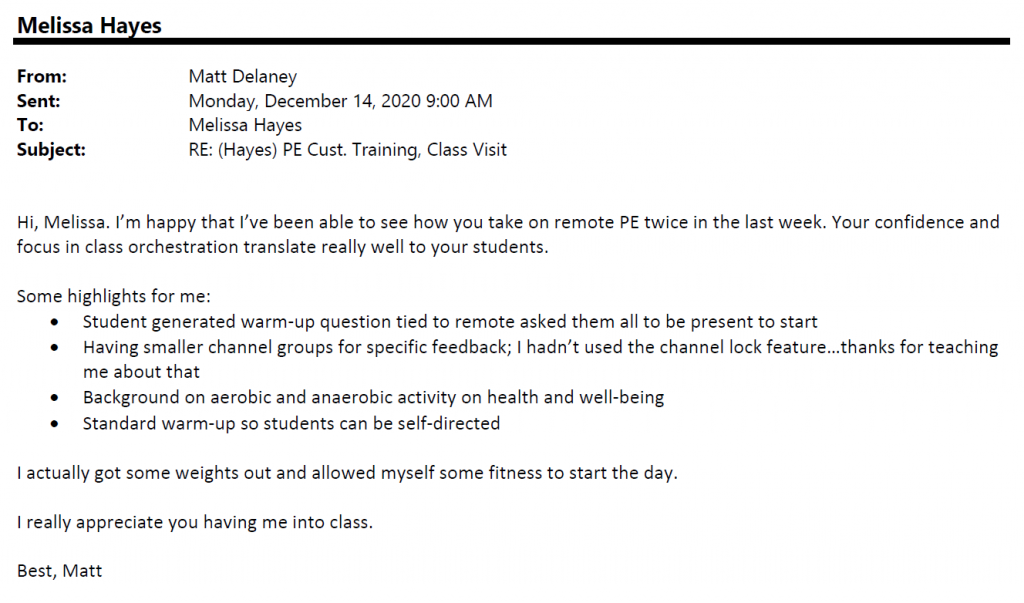
Feedback from parents (of both Upper and Middle school students):
 |
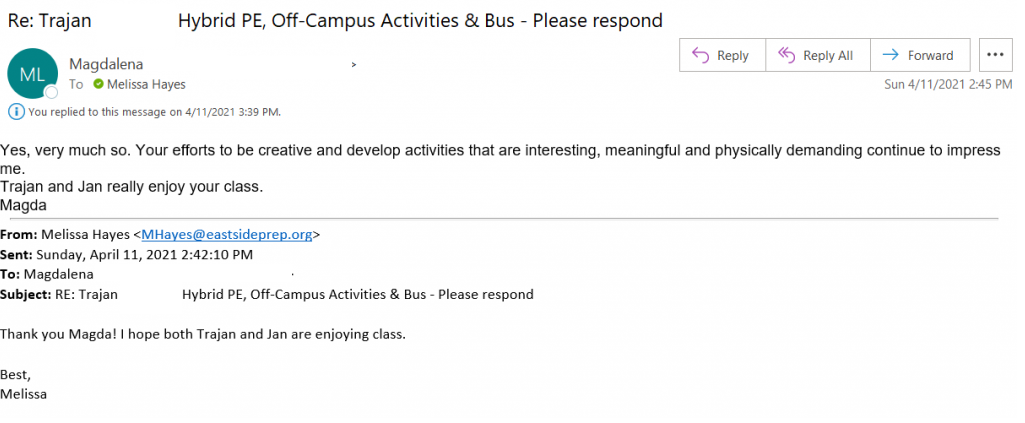 |
 |

I value the opportunity to have observers and as a part of the PDP experience, my PDP team members have visited my classes over the last several months, it has equipped me with valuable feedback and insights. I extended an open invitation to visit and observe anytime it worked for their schedules. This allowed for both in-person and remote observations.
“The way [class] is structured definitely keeps it easy to engage and hard to disappear into the blurry abyss- kudos to Hayes’ class management for this. Despite being remote, I felt as if there was a community- or at least Hayes requires everyone to be on camera and speak into microphone at minimum twice (opening question and closing question) per class.”
Steve Fassino
When I receive feedback from outside observers, I review that feedback with students when appropriate. This may begin with a question based on the feedback that invites students to share about their experience and feel supported in providing constructive criticism. This dialogue can help them better articulate feedback about the student experience, as well as give me a more holistic understanding of said feedback and confirm if it is the experience of students as well as observers. This experience of engaging in open discussions of ongoing feedback is also intended to help students develop increased comfort with giving and receiving feedback.
Seeks out Diverse Opinions of Others for Guidance
Over the last 16 years, I’ve been privileged to be able to build strong relationships with members of our community across all disciplines and groups. These relationships allow me to expand my own understanding and diversify the perspective at which I examine what I do on a day to day basis. By regularly interacting with people from the many integral parts of community—possible because we’re so collaborative—I have built up my own understanding of how the many moving pieces fit together. I aim to always be aware of the “big picture” perspective of our community, my role, and how everyone is involved in it.
While piloting and proposing the Customized Training to Maximize Performance (CTMP) course, I asked for input from colleagues, parents and students.
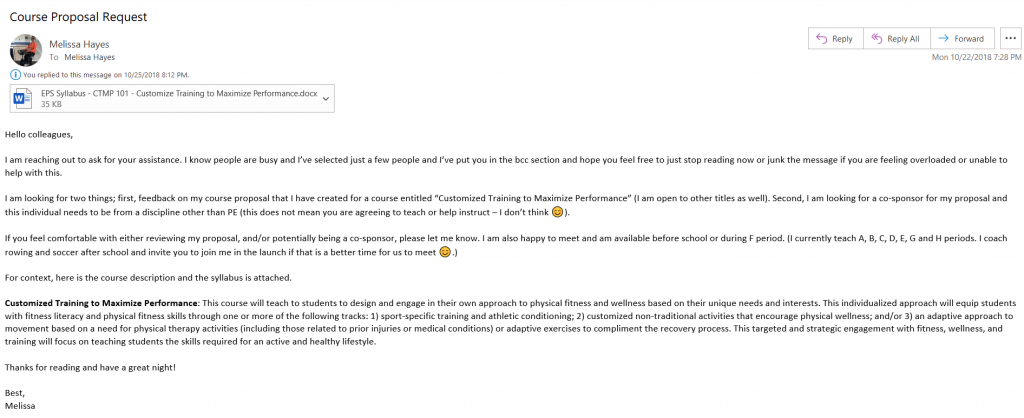
In the process of gathering feedback as part of this PDP, I sought out to survey colleagues from all disciplines, departments, and from as many roles/functions in the school as possible. I received over 80% participation in my survey, with representation from each department or discipline. To me, that was an indication that other people understand how much I appreciate and value them, their role and their feedback.
Manages and Prioritizes Professional Tasks and Responsibilities
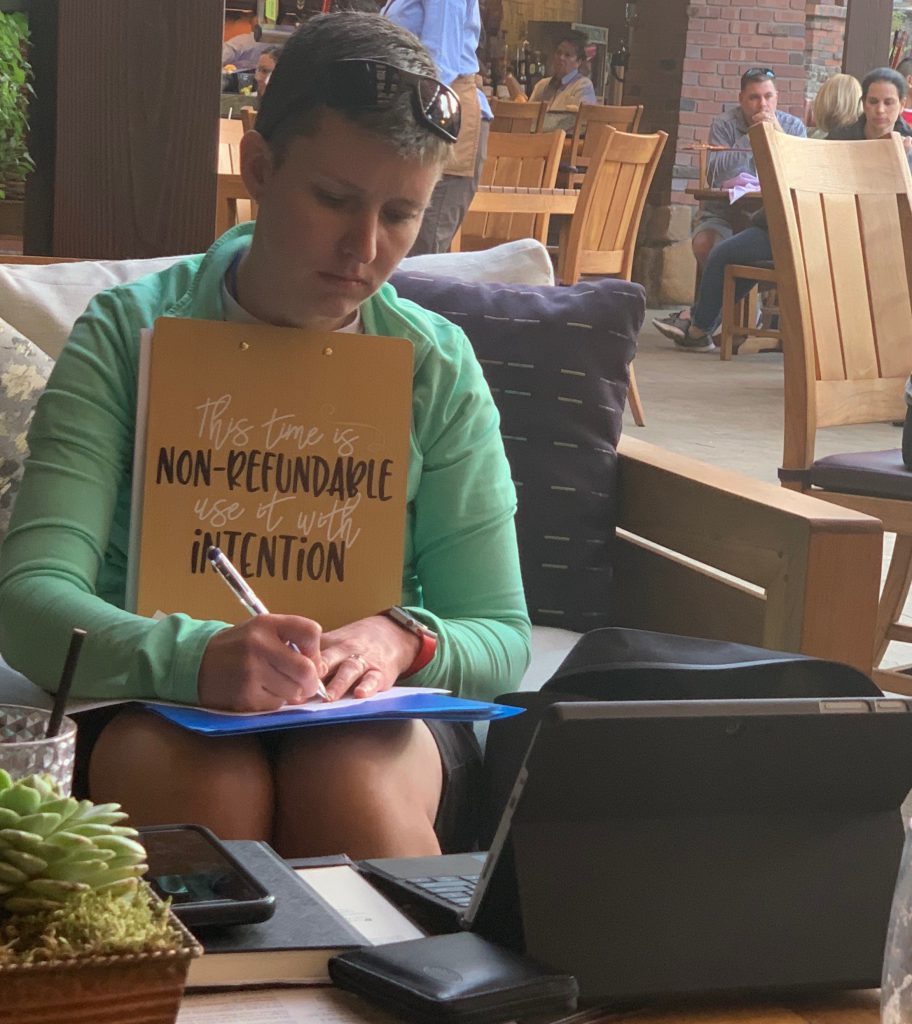
Due to the nature of physical education as a discipline, my professional priorities are first and foremost always the items that directly impact people. For example, I will always prioritize addressing the tasks and responsibilities related to physical safety and wellbeing. An important distinction for me is the idea of “professional.” By definition, a professional is paid to do certain tasks. To me, acting like a professional means carrying out those tasks and responsibilities with a mindset of proactive participation, continuous improvement, and responsibility to serving the community.
Most of what I do impacts other people. So my prioritization must be an iterative and ongoing process that remains flexible enough to account for the unexpected events that inevitably occur. Prioritization is also influenced by my assessment of urgency and importance. I would define urgency from the perspective that if I do not take action, the situation may become negative or worsen, and create problems.
Similar to what I teach my students, preparation is the foundation of participation, and so many of my tasks I focus on are ways to prepare. This might look like coming in early to set up/ prepare equipment for a class, updating Canvas when there are changes or using backward design to ensure our journey leads toward the intended outcome goals and supports the discipline mission and philosophy. This preparation work is critical, because I want to be fully engaged with my students when I’m in class and the detailed preparation supports maximum flexibility.

Sometimes people have commented about my work hours or the different tasks I do at EPS. I firmly believe in the expression, the less time you have, the less time you have to waste. When I maximize the time I can be working and engaged in my work, the more I benefit from it. I focus on preparation, participation and progress.
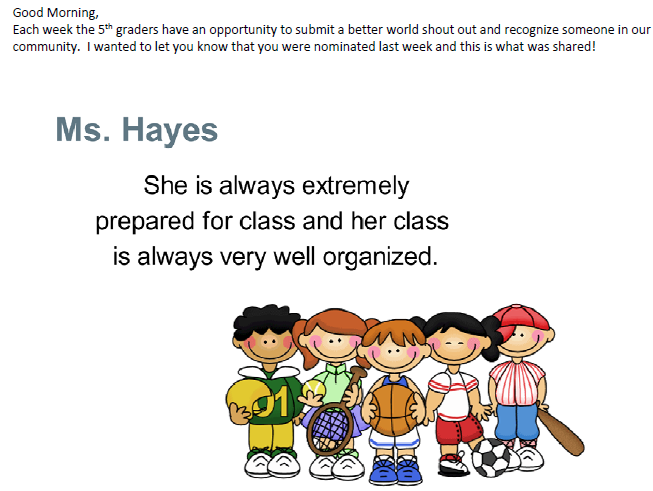
Communicates and responds to students, parents, and colleagues in a timely and construction manner.
I like emails and meetings, in large part because I am always seeking out information. The more I know about our school, our community, and the related activities, the better I can identify how I can contribute. The more I know, the more I can support our EPS community both directly and indirectly.
Communication is one of my favorite parts of my role at EPS. Regardless of communication mode, I want to always proactively communicate in the most effective way possible. Almost all the time, how we communicate is just as important as what we communicate.
Verbal communication: While sometimes email is the most appropriate, in certain circumstances phone calls or in-person conversations are better. It all depends on the situation.
Written communication: My personal goal is to respond to emails as soon as possible and appropriate. Email allows me to include advisors and parents, keeping everyone informed. However, I remain aware that there are times that it is essential that I draft the email but wait to send. Responding to emails is one way to interact with and demonstrate mutual respect and care for others in the EPS community. I also want to help guide students through ways to develop their own communication practices.
Emails allow me to track communication, and create a clear written journal of progress and growth. Another benefit of the PDP experience has been I’ve reviewed old emails, and I’ve had the opportunity to look back and see my own professional growth through that paper trail.
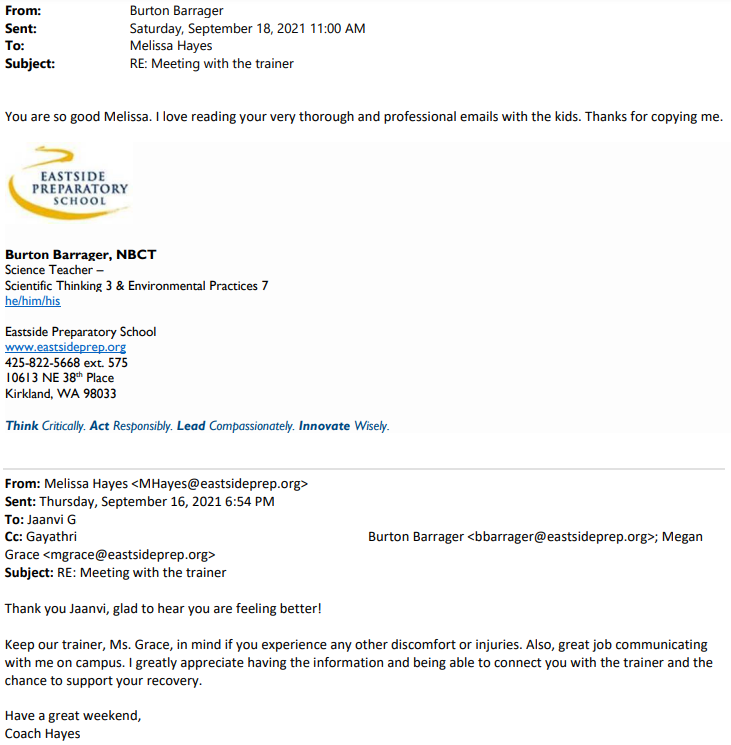
Building Student Communication Skills
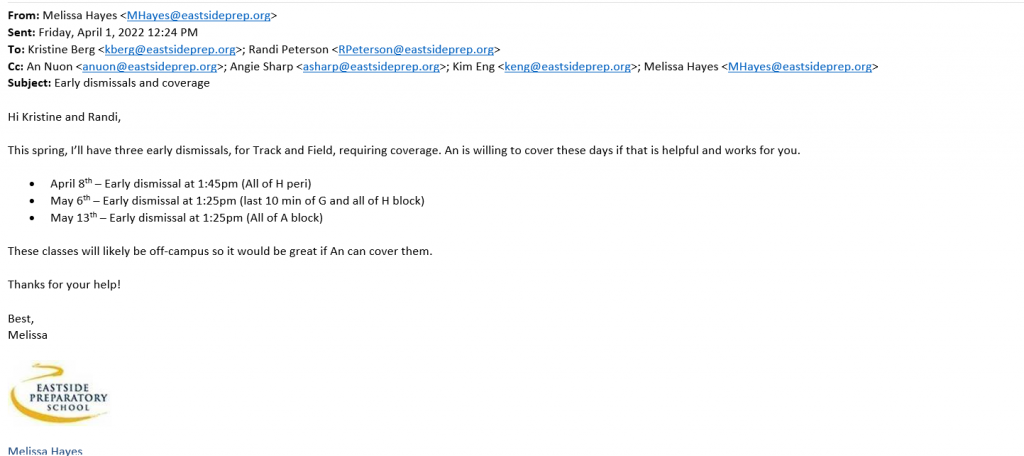
An example of communication skill building comes from my 5th/6th grade basketball team (as well as the other teams I coach), I explain to students how to send an email or meeting request. I require them to email teachers to request an early dismissals. The goal is for these messages to:
1. Be sent 48 hours ahead of time to allow students and teachers to collaborate proactively in case there is going to be something missed that needs to be completed ahead of time or if there is an adjustment that can be made so that it doesn’t negatively impact the class or the student.
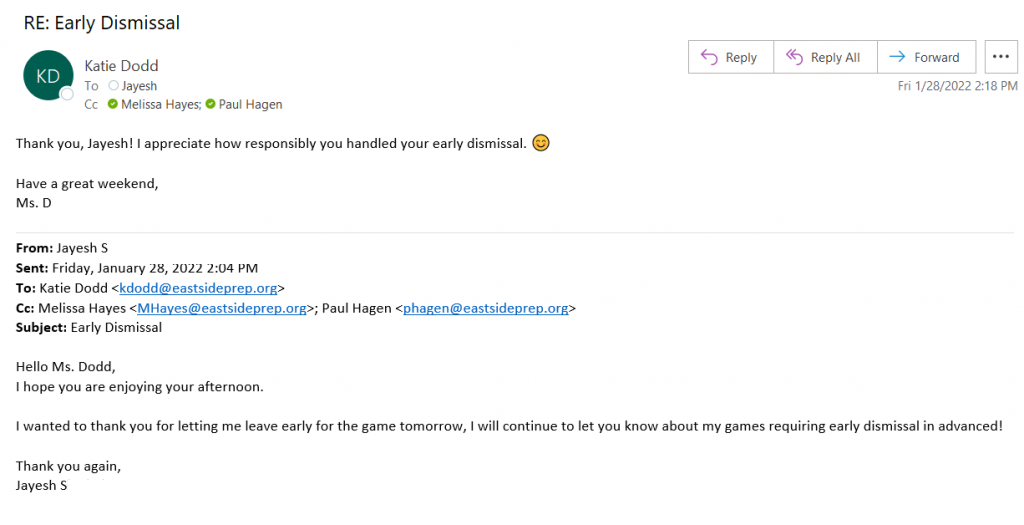
2. Asking for the early dismissal: early dismissal impacts the student for whom there is a dismissal as well as teachers and other students. Requesting this dismissal shows the value of understanding the importance of classes and the preparation teachers and classmates put into each session.
 |
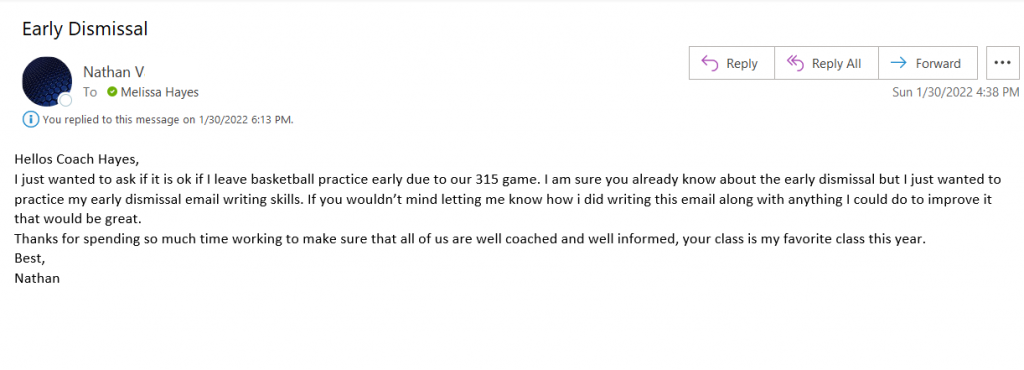 |
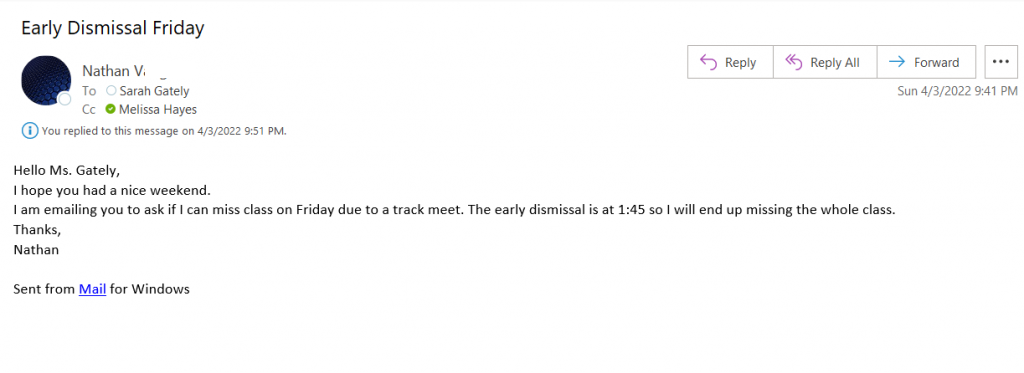 |
3. Thanking/showing appreciation for support: a respectful response, acknowledging the impact that early dismissal may have on a teacher and classroom experience.
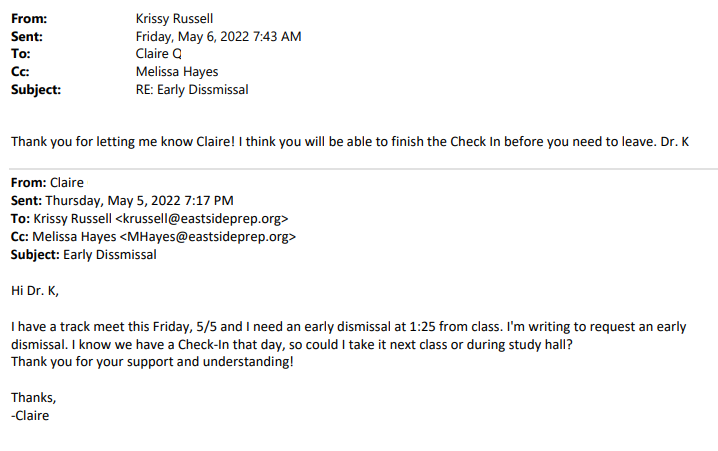
While this is initially a challenge for some students, it has been beneficial in planning to complete missed tasks. For off-campus classes and activities, it allows for pre-planning of adjustment to the schedule when possible. Recently, there was an early dismissal that affected students in my 7/8 PE class, and knowing ahead of time allowed students to participate in the warm-up activities and explanation of drills before their departure. Once student-athletes left, we departed as well and went to the park to continue with the game. This has been a small, but important step in the process of helping students develop strong communication skills, proactive planning mindset, and an understanding that preparation can be part of performance.
“Action expresses priorities.”
Mahatma Gandhi